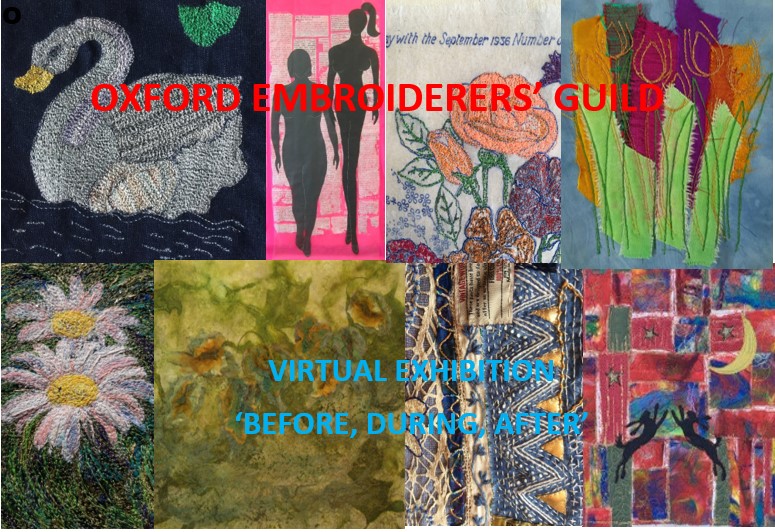Cynth started by describing her most recent (and exciting although stressful) piece of work. This was to design a logo for a banner to be used as part of the Welsh Tourist Board’s current campaign aimed at encouraging more tourists to Wales. A large, colourful piece, it will be widely seen on social network sites such as Facebook and as part of the TV advert campaign.
I think some of the audience were a little confused by how this fitted into textiles but Cynth got round this by using it as a way of describing the technique she has developed and called "Intaglio Stratti". This is based on the technique of stitching layers of fabrics together and then cutting back top layers to reveal others underneath. Cynth has made this technique her own by using up to 14 layers of fabrics, many of them vibrantly coloured and textured Indian silks, and cutting back in very small areas to create very detailed pictures. These are further enhanced by simple hand stitching.
The first pieces she showed us (on slides) did look a little dated, but that was understandable when you realised they were originally done in the 1970s. Cynth believes in allowing the viewer to read their own story in her work, although many of the pieces are built up from themes in her own personal life. Her work has obviously developed in complexity, from early pieces of mushrooms and plant life, she has moved onto female forms seen within cliffs and Salvador Dali-type mirror images combined with human hands. Cynth told us that she restricts her colour palette and only has 3 boxes of fabrics under the bed – when you see the range of tones of colour in her work this is hard to comprehend!

Cynth Weyman
Reality & Desire
Reality & Desire
It was difficult to appreciate from the pictures that many of the pieces are designed as panels or art quilts to be hung on walls (think large pieces over 3ft tall) and often there are a number of them forming a series. However, as she had also bought some pieces for us to actually see, you could start to appreciate the amount of work needed to create each picture. She also bought a large collection of cards and prints for sale and emphasised the importance of taking a good picture to start with and knowing how to enhance this on the computer.

Cynth Weyman
Coming Down Going Up
Coming Down Going Up
It was perhaps a shame there were not more quilters in the audience as this technique may have appealed more to them as there was not a lot of stitching to appeal to embroiderers.


















